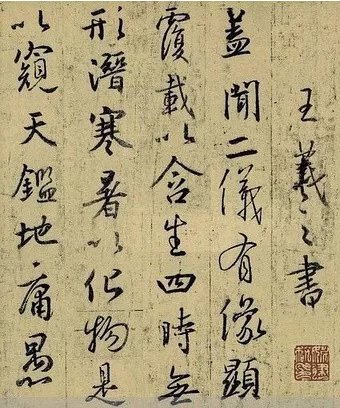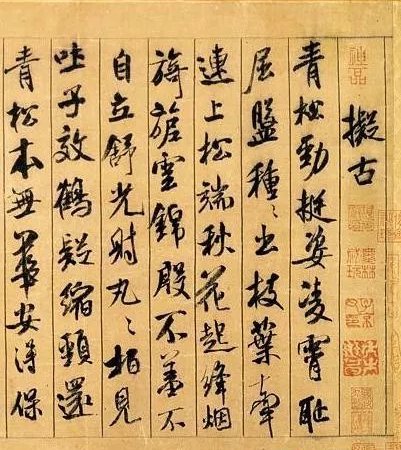If you want to practice calligraphy, which copybook should you choose? There is no rush to choose. Let’s first understand what running script is?
Running script is a calligraphy style between regular script and cursive script, which appeared around the late Western Han Dynasty and the early Eastern Han Dynasty. After experiencing the golden period of the Wei and Jin Dynasties and the development period of the Tang Dynasty, running script reached a new peak in the Song Dynasty and gradually occupied a mainstream position among various calligraphy styles. The name of running script first appeared in the article "Four Styles of Calligraphy" by Wei Heng of the Western Jin Dynasty: "In the early Wei Dynasty, there were two schools of running calligraphy, Zhong (Yao) and Hu (Zhao), both of whom learned from Liu Desheng." Zhang Huaiguan's "Shu Duan" in the Tang Dynasty Records: "The running script was written by Liu Desheng. It is a small forgery of the official script. It is simple and popular, so it is called running script." Zhang Huaiguan also said in his "Shu Yi": "Fu's running script is neither cursive nor genuine, Li Fang Escape from the circle lies between Ji and Meng. Those who are both true and true are called true practices, and those who carry grass are called walking grass." Fengfang of the Ming Dynasty had a more vivid description in "Shu Jue": "Write without stopping, write on paper. Without engraving, turn lightly and press hard, like water flowing like water and clouds, without any interruption, and it will always be a business." Running script was developed on the basis of official script. It is between regular script and cursive script to make up for the writing speed of regular script. Produced by being too slow and difficult to read in cursive. "Xing" means "walking", so it is not as sloppy as cursive script, nor as straight as regular script. In essence, it is the cursiveization of regular script or the regularization of cursive script.
Features of running script:
1. Both big and small. That is, each character appears in different sizes, and the pens of a character are connected to each other. The connections between characters are both real and intentional, broken and connected, and they echo with each other.
2. Combine retraction and release. Generally, those with short lines are closed, and those with long lines are released; returning to the front is closed, and flanking is released; most of them are left closing and right opening, upper closing and lowering, but they can also be converted into each other, and it is not ruled out that left opening is closed, right closing, and upper and lowering receive.
3. Appropriate density. Generally, it is dense at the top and sparse at the bottom, dense on the left and sparse on the right, dense on the inside and sparse on the outside. The middle palace is tightly knotted. The smaller the blank space for the frame, the better. The smaller the blank space for the circled strokes, the better. In the layout, the word spacing is tight, the line spacing is wide, and the writing is vigorous and colorful.
4. The blend of shades and shades. Running script writing should be easy, lively and quick, and master the combination of speed and delay, movement and stillness. In the design of ink color, the first character should be thick and the last character should be dry. The lines are long, thin, short and thick, with appropriate weight and alternate shades. It's similar to cursive writing, but not as cursive.
Three major running scripts:
When talking about running script, we must talk about the "three major running scripts" recognized by calligraphers.
1. Wang Xizhi's "Lanting Preface"
2. Yan Zhenqing's "Manuscript of Memorial to My Nephew"
3. Su Shi's "Huangzhou Cold Food Post"
But if you want to practice running calligraphy, it’s best to start with the following copybooks

"Preface to Huairen's Collection of Wangshengjiao" (Wang Xizhi)

Mi Fu's "Shu Su Tie"
Recommended cursive calligraphy
copybook | Features | Reasons for recommendation |
Preface to the Sacred Teaching of Huairen's Collection of Chinese Characters (Wang Xizhi) | Flexible and changeable, seeking changes while maintaining a stable structure. | Two kings of methods |
Shu Su Tie (Mi Fu) | The shape is dangerous and the writing is elegant and handsome. | Show personality |








